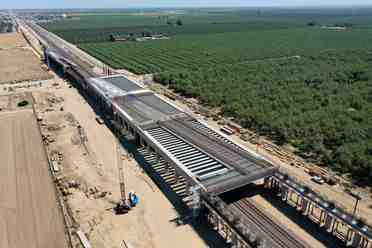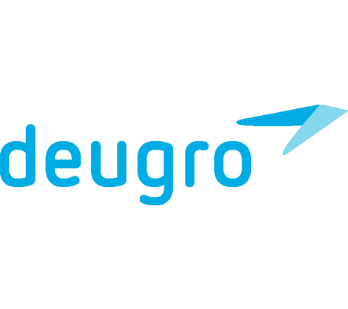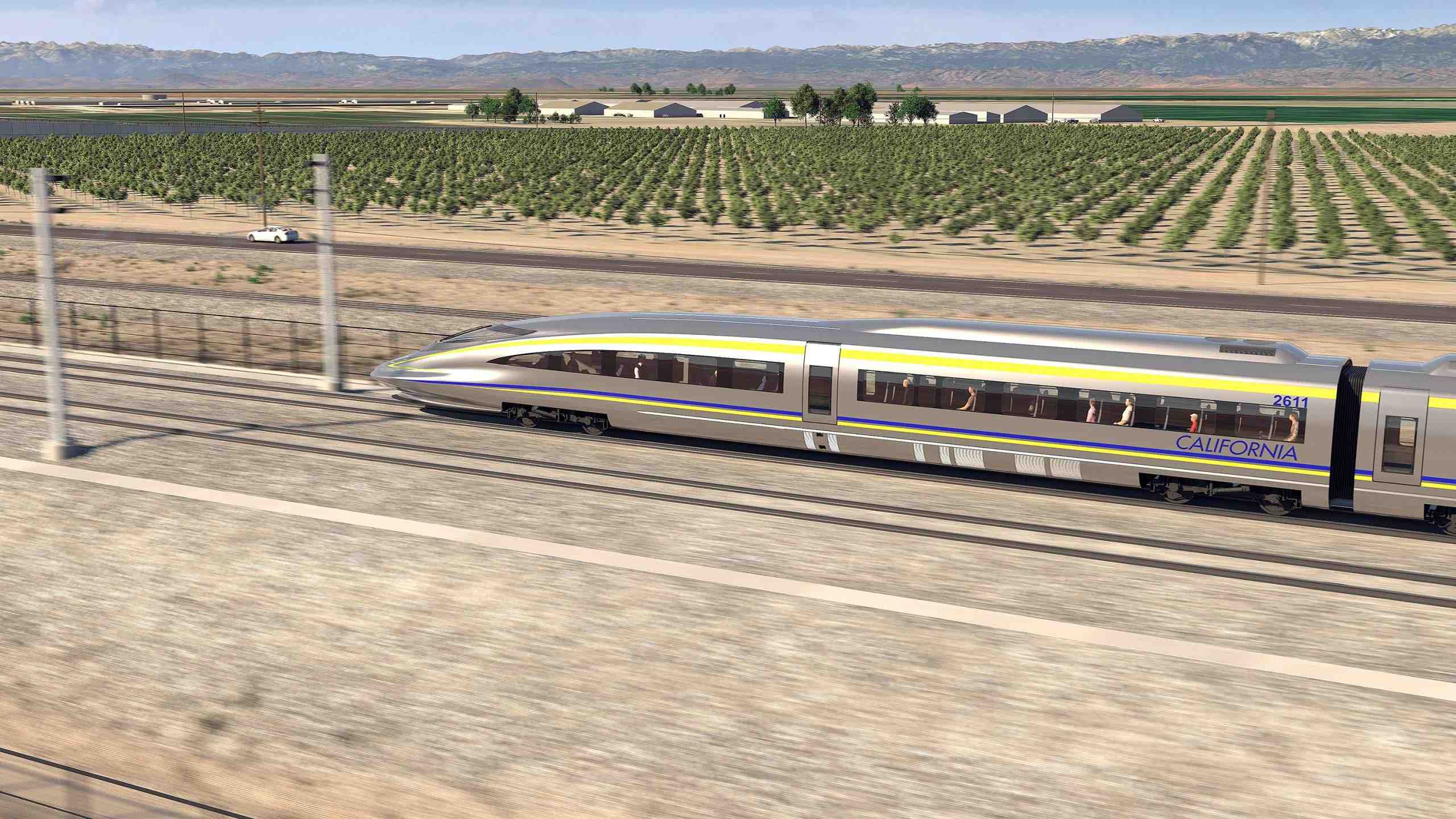The nation’s first high-speed rail project is now environmentally cleared between San Francisco and North Los Angeles County
SAN JOSE, Calif. – The Board of Directors of the California High Speed Rail Authority (Authority) today approved the Final Environmental Impact Report/Environmental Impact Statement (Final EIR/EIS) and approved the approximately 43-mile project for the San Francisco to San Jose Division . This action finalizes environmental approval for Northern California High Speed Rail and extends environmental approval to 420 miles of the project’s 500 mile route from San Francisco to Los Angeles/Anaheim.
“With environmental studies completed in Northern California, we are closer than ever to realizing the nation’s first high-speed rail system,” said Board Chairman Tom Richards. “We look forward to working with all of our regional partners and stakeholders to develop modern, sustainable transportation infrastructure, complete our work in the Central Valley, and connect to the Bay Area as soon as possible.”
The approval of the San Francisco to San Jose section of the high-speed rail project and its environmental document represent a significant milestone in advancing the statewide program to connect the San Francisco Bay Area and Peninsula to San Jose, the Central Valley and Los Angeles. County in Southern California. Connecting these major economic regions with high-speed rail will change the way people travel across the country and encourage more equitable employment and housing opportunities.
Board certification of the final EIR/EIS from San Francisco to San Jose and approval of its design work will move the design work closer to being shovel-ready when funds are available for final design, pre-construction and construction.
In approving this part of the project, the board of directors of the authority chose the preferred alternative (alternative A). This alternative is based on the Caltrain electrification project and includes the infrastructure necessary to provide high-speed rail service in the corridor. Approved Alternative A extends from the previously approved San Jose high-speed rail station and includes new high-speed rail stations in San Francisco and Millbrae; construction of a light maintenance facility on the east side of the Caltrain corridor in Brisbane; and security and speed improvements in the region.
The final EIR/EIS is available on the authority’s website here: https://hsr.ca.gov/programs/environmental-planning/project-section-environmental-documents-tier-2/san-francisco-to-san-jose -project-section-draft-environmental-impact-report-environmental-impact-statement/
California High Speed Rail is currently under construction along 119 miles of California’s Central Valley at 35 active construction sites. To date, more than 8,000 construction jobs have been created since construction began. For more visit: www.buildhsr.com
The following link contains recent videos, animations, photos, press center feeds and the latest renders: https://hsra.box.com/s/vyvjv9hckwl1dk603ju15u07fdfir2q8
All of these files are available for free use, courtesy of the California High Speed Rail Authority.
Southern California to Las Vegas: Virgin Trains USA subsidiary XpressWest connects Metropolitan Los Angeles to Las Vegas (top speed 180 mph and only 90 minute journey, may begin service by late 2023) Dallas and Houston: in less than 90 minutes the largest speed of 200 mph.
Is high-speed rail cheaper than flying?

Sure, you could fly, but when you factor in the trip to the airport, going through security, and sitting on the train track, the bullet train is still faster. It would also be cheaper. Much cheaper. That bullet train ticket would cost about $75, compared to over $200 to fly or drive.
Is high-speed rail safer than flying? Trains are also safer than airplanes, in part because many train stations have outdoor platforms where passengers board, Dr. Aaron Rossi. This is much less risky than the interior layout of airport security lines and waiting areas where passengers gather and sit before boarding.
Is high-speed rail expensive?
State transportation officials budgeted an additional $5 billion for California’s high-speed rail project, bringing the total projected cost to $105 billion, according to a 2022 business plan report. This $5 billion increase is due to moving the train away from Cesar E.
What makes high-speed rail so expensive?
First, real high-speed railways – the kind we see in Europe, Japan and China – are extremely expensive. It requires an entirely new HSR-only right-of-way, with much flatter curves and complete separation from all intersections at highway levels. This often means extensive tunneling and elevated construction.
How much will the high-speed rail cost?
The railroad authority estimated in 2008, when voters approved $9 billion for the system, that it would cost $33 billion and be operational by 2020.
Is high-speed rail cheap?
Air fares averaged 13.8 cents per passenger mile in 2019. By comparison, Amtrak (the only operator of intercity passenger trains in the United States) fares averaged 35 cents per passenger mile, while Amtrak fares are high… “Acela’s speed was more than 90 cents per passenger mile.
Are high speed rails worth it?
According to the International Union of Railways (UIC), high-speed rail is eight times more energy efficient than airplanes and four times more efficient than cars. It will also reduce greenhouse gas emissions and improve air quality.
What makes high-speed rail so expensive?
First, real high-speed railways – the kind we see in Europe, Japan and China – are extremely expensive. It requires an entirely new HSR-only right-of-way, with much flatter curves and complete separation from all intersections at highway levels. This often means extensive tunneling and elevated construction.
Will California get a bullet train?

In a breakthrough for the nation’s most expensive public infrastructure project, California’s high-speed rail finally appears to have the money and legal approval to complete the first leg.
How Much Will the California High Speed Train Cost? The 2022 business plan estimates that the entire 500-mile high-speed system between Los Angeles and San Francisco will cost as much as $105 billion, up from $100 billion two years ago. In 2008, when voters approved a bond to help build the rail, the authority estimated the system would cost $33 billion.
Will California high-speed rail be completed?
Phase 1 is expected to be approximately 520 miles (840 km) long, with completion expected in 2029. Phase 1 would connect downtown San Francisco, Los Angeles, and Anaheim using high-speed rail through the Central Valley.
Is California getting a bullet train?
California Bullet Train Gets $4.2 Billion Greenlight for First Phase Amid Bigger Challenges Ahead.
What would high-speed rail mean to California?

California’s high-speed rail will connect the state’s mega-regions, contribute to economic development and a cleaner environment, create jobs, and preserve agricultural and conservation lands.
What is the purpose of high-speed rail in California? High-speed rail is a key part of California’s sustainable transportation network. High-speed rail aims to reduce congestion and pollution while improving mobility and increasing access to jobs and affordable housing.
Will California ever get high-speed rail?
The system will run from San Francisco to the Los Angeles basin in less than three hours at speeds that can exceed 200 miles per hour. The system will eventually expand to Sacramento and San Diego, totaling 800 miles with up to 24 stations.
Will the California High-Speed Rail ever be completed?
Phase 1 is expected to be approximately 520 miles (840 km) long, with completion expected in 2029. Phase 1 would connect downtown San Francisco, Los Angeles, and Anaheim using high-speed rail through the Central Valley.
How fast is a bullet train in mph?

Most Shinkansen trains operate at a speed of about 500 kilometers per hour (200 to 275 miles per hour). With the development and introduction of new technologies, future trains may reach even higher speeds.
How fast is the fastest bullet train? Briefing Japan’s L0 series Maglev is the fastest train in the world with a speed record of 374 mph or 602 km/h. It can cover the distance from New York to Montreal in less than an hour.
How fast is China’s bullet train?
China debuts world’s fastest train (CNN) â In Qingdao, China, a high-speed maglev train that can reach speeds of 600 kilometers per hour (373 miles per hour) has been unveiled for the first time. It was developed by the state-owned China Railway Rolling Stock Corporation and is considered the fastest train in the world.
Which is the fastest bullet train in the world?
1: Shanghai Maglev – 460 km/h/286 mph (China) The fastest public train in the world is also unique – it is the only link in the world that currently transports passengers using magnetic levitation (Maglev) instead of conventional steel wheels on steel rails.
How fast is the bullet train in Beijing?
| Beijing-Shanghai high-speed railway | |
|---|---|
| Speed of operation | 350 km/h (217 mph) |
| Maximum slope | 2% |
| Chinese name | |
| Simplified Chinese | 京沪é«ééè·¯ |
What is the average speed of the bullet train?
High-speed trains vary in speed, although most travel between 150 and 287 miles per hour. The Shinkansen averaged 100 to 131 mph (160 to 210 km/h) in previous days. Newer sections of the Japanese network average 163 mph (261 km/h) and boast a top range of 187 mph (300 km/h).
What is the average speed of a Japanese bullet train?
Japan Atlas: 500 series trains. Number of seats: 1324 (first class 200, second class 1124). Average speed between stations: 261.8 km/h (162.7 mph) (Speed between Hiroshima and Kokura stations. The train covers this 192 km (119 miles) in 44 minutes.)
How fast is a bullet train top speed?
Although the fastest conventional bullet trains (N700A Shinkansen) can reach a top speed of 186 mph or 300 km/h, a new development in the country in magnetic levitation (maglev) is breaking speed records.

